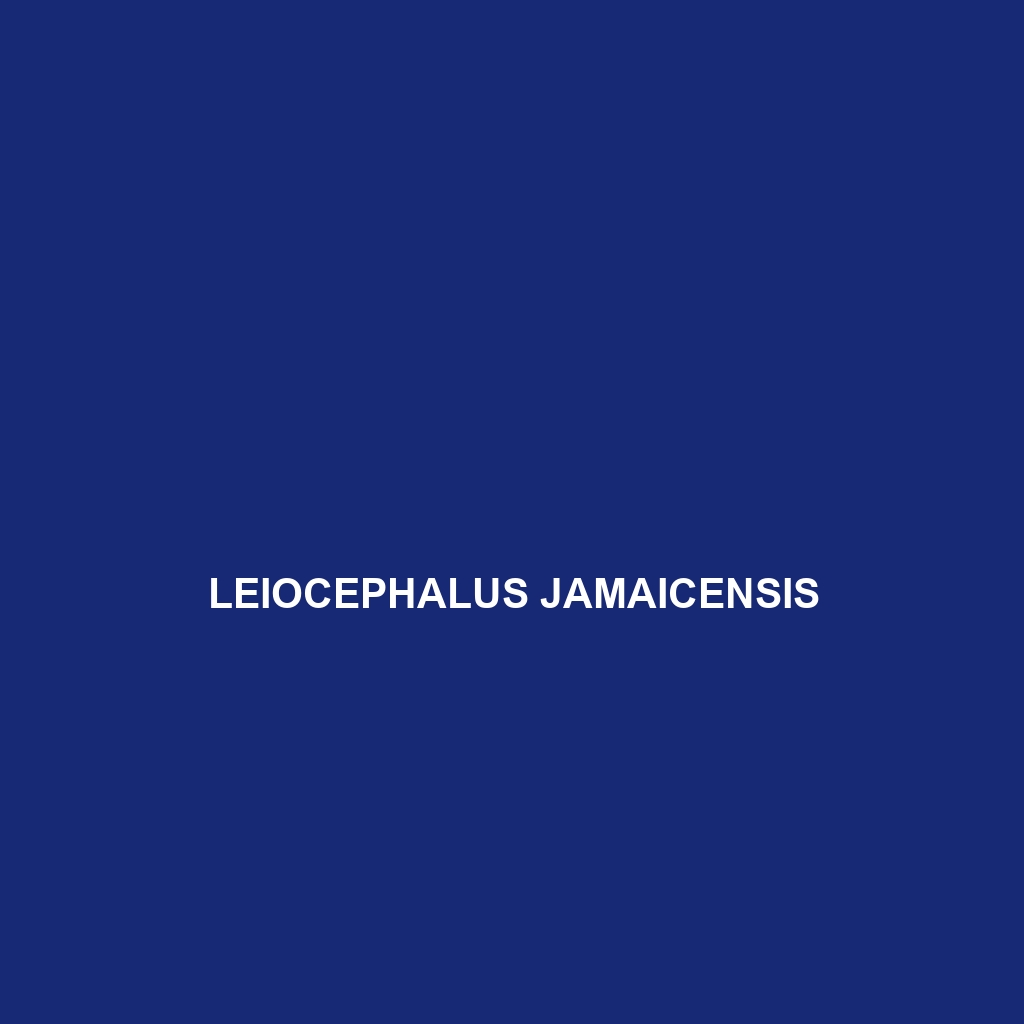-

Leiosaurus catamarcensis
Leiosaurus catamarcensis is a medium-sized lizard native to the rocky scrublands of northwestern Argentina, known for its impressive camouflage and diurnal behavior. This insectivorous species plays a vital role in its ecosystem by regulating insect populations while adapting to challenging environments.
-

Leiolepis boehmei
Discover the vibrant and agile Leiolepis boehmei, a fascinating lizard native to the tropical rainforests of Southeast Asia. Known for its striking colors and iridescent scales, this omnivorous species plays a crucial role in maintaining ecological balance while thriving in diverse habitats.
-

Leiocephalus varius
Discover the Leiocephalus varius, or variable curlytail lizard, a striking insectivorous species native to the Caribbean that thrives in diverse habitats and is known for its distinctive curly tail and intricate social behaviors. With a robust body, variable coloration, and crucial role in controlling insect populations, this fascinating lizard is a vital part of its…
-

Leiocephalus stictigaster
Introducing the Leiocephalus stictigaster, or common curly-tail lizard, a vibrant insectivore found in the Caribbean’s diverse habitats, including savannas and dry forests. With distinctive dark stripes, a long tail for predator evasion, and a social, diurnal nature, this species is vital for ecological balance, controlling insect populations and serving as prey for larger wildlife.
-

Leiocephalus punctatus
Discover the Leiocephalus punctatus, also known as the spotted curlytail lizard, a medium-sized, agile lizard found in various Caribbean habitats that feeds primarily on insects and features a distinctive curled tail. With its vibrant golden-brown coloration and adaptability, this species plays a crucial role in maintaining the ecological balance.
-

Leiocephalus psammodromus
Discover the Leiocephalus psammodromus, or sand lizard, a resilient species native to the Caribbean’s warm climates. This omnivorous lizard thrives in diverse habitats, showcasing fascinating behavior and remarkable camouflage that enhances its survival in the wild.
-

Leiocephalus partitus
Leiocephalus partitus, commonly known as the Ctenosaur, is a robust lizard that thrives in the tropical habitats of Central America, displaying a brown to green coloration for excellent camouflage. This diurnal insectivore can reach lengths of up to 18 inches and plays a crucial role in controlling insect populations within its ecosystem.
-

Leiocephalus lunatus
Discover the intriguing Leiocephalus lunatus, a medium-sized lizard native to the tropical Caribbean, known for its vibrant coloration and role as both predator and prey. With a diverse diet and unique sunning behavior, this adaptable species thrives in various habitats, contributing to ecosystem health and biodiversity.
-

Leiocephalus jamaicensis
Discover the Leiocephalus jamaicensis, or Jamaican Lizard, a vibrant and adaptable species found in tropical regions of Jamaica and the Caribbean. With a striking coloration and an insectivorous diet, this fascinating lizard plays a vital role in its ecosystem as both a predator and prey, thriving in diverse habitats from rainforests to urban gardens.
Search
Popular Posts
-
Lygosoma corpulentum
Discover the Lygosoma corpulentum, or fat skink, a robust insectivorous lizard native to Southeast Asia’s moist tropical rainforests and varying habitats. With a stocky body, impressive camouflage, and remarkable adaptability, this ovoviviparous species plays a crucial role in maintaining ecological balance.
-
Lygosoma boehmei
Lygosoma boehmei is a slender, nocturnal insectivore found in humid tropical rainforests and savannas of Southeast Asia, exhibiting a smooth, camouflaging texture and remarkable burrowing abilities. This vulnerable species plays a crucial role in its ecosystem by controlling insect populations and serving as prey for larger predators.
-
Lygosoma bampfyldei
Lygosoma bampfyldei, commonly found in tropical and subtropical regions, is a moderately sized lizard measuring 15 to 25 cm, known for its elongated body and glossy, camouflage coloration. This insectivorous species thrives in moist habitats and plays a vital role in maintaining ecological balance by controlling insect populations.
Categories
Tags
animal adaptations (924) animal behavior (5000) animal reproduction (865) behavior (920) biodiversity (7853) conservation (1670) conservation efforts (1778) conservation status (5748) diet (2104) ecological balance (2087) ecological role (1952) ecosystem (1469) ecosystem role (2901) endangered species (2514) habitat (3280) habitat conservation (1136) Habitat Destruction (1421) habitat loss (3385) herpetology (870) insectivorous reptiles (948) IUCN Red List (1971) lizard behavior (881) lizard diet (944) lizard reproduction (1101) nocturnal animals (2754) nocturnal behavior (2592) nocturnal reptiles (1061) physical characteristics (2058) predator-prey relationships (927) reproduction (2890) reptile behavior (1037) reptile conservation (1348) reptile reproduction (1069) rodent species (1325) seed dispersal (2145) Seed Disperser (979) small mammals (1168) snake behavior (952) snake diet (1061) snake reproduction (1129) tropical forests (948) Vulnerable Species (4926) wildlife (2511) wildlife conservation (5355) wildlife protection (1008)



